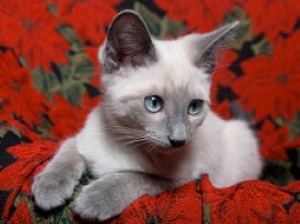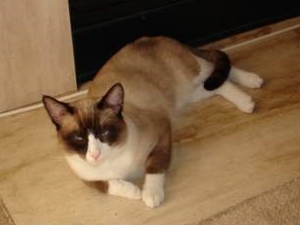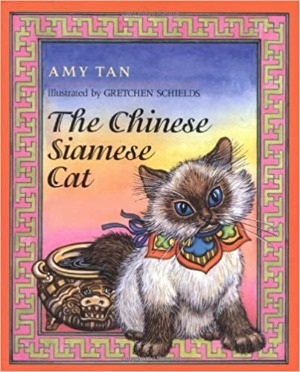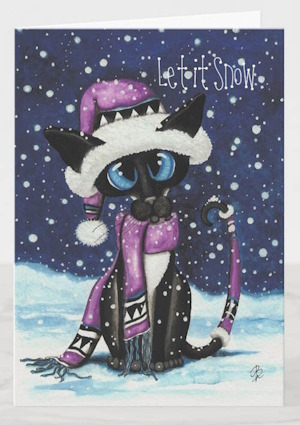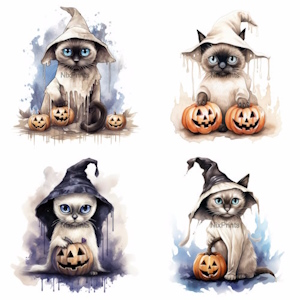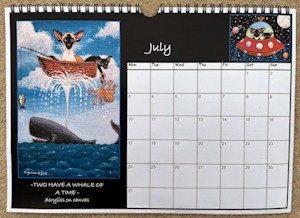- Home
- Photos & Stories
- Rescued in Japan, and a Question of Cat Genetics
Rescued in Japan, and a Question of Cat Genetics
I've been living in Shikoku Island off Japan, and became interested both in cat rescue and the genetic heritage of cats there.
As you probably know, cats are not native to Japan but a human intervention and were basically only released into the wild about 400 years ago, allegedly by Imperial decree to protect the silk industry.
(There may be one smaller, remote island with the indigenous Iriomote cats.)
Shikoku is the smallest of the big islands and was only connected to the mainland by a bridge in the 1980s. Even now, I find it hard to believe the bridges are a conduit for feral migration. I also believe the mountainous terrain and sparse human population made it equally difficult for genes to spread.
In the city I lived in, I saw a few ferals with apparent Siamese genes. One or two beautifully marked. All of the old fashioned, round head type.
I rescued one such kitten which had been dumped at our local cemetery, one of the regular dumping/feeding grounds and colony homes.
She was sick, tiny, and pretty much riddled with everything (except FIV and leukemia) but cleaned up nicely. As a blue-eyed blonde in a world of dark hair and dark eyes, she goes down very well.
In Japan, there is definitely a half-way house of cats which are not stray, not entirely feral but not domestic. They live outside but are looked after by locals.
The warm or mild climate, and closeness of houses, make this not such an arduous life as perhaps elsewhere. There is also a very poor pedigree system and a fairly faddish and abusive pet industry.
I have read your piece and others about the variance of traditional and modern styles with interest and wondered how much of a gene makes a breed of cats? Obviously there is no breed control with ferals and yet "breeds" still keep coming through.
Is this cat likely to be a Siamese cross, or do pointed markings arise in other ways?
There were definitely more Bobtails than Siamese but there again, I wonder about the survival of breeds and how the genes mix. Most feral/strays just look like standard Western cats but have far better, or less fussy eating habits!
Unsurprisingly, they love to tuck into rice - even brown rice - vegetables and greenery. Are cats supposed to love miso, natto and vegetable curry? (Yes, I know about the onion and garlic danger).
Here is Phoebe having a little love and play fight with our Japanese Bobtail boy who was also a rescue around the same time. Not great markings by pedigree standard I guess but not bad for free and a bit of love!
Reply from Caroline:
Thank you for your interesting message and welcome! I think you're our very first correspondent from Japan.Unfortunately your picture of Phoebe didn't come through with the message (I've emailed you separately to ask for it).
The Siamese pointed coat pattern is produced by a gene called the 'Himalayan' gene. It's also found in rabbits, rats and mice and produces a similar pointed coat in these animals, too.
The Himalayan gene causes a partial albino effect, which in Siamese cats (seal point Siamese are, fundamentally, black cats) causes parts of the coat to turn white.
This gene is heat sensitive, which is why the warmer parts of the cat (neck, chest, body) are paler than their extremities (ears, face, paws, tail), and which is also why Siamese kittens are born pure white - the heat of the womb restricting the development of the color points until after birth.
The Himalayan gene is recessive to the dominant color gene. This means that a cat needs to inherit the Himalayan gene from both its parents in order for the pointed pattern to show.
I believe (but don't know for a fact) that the gene is found naturally among wild cats so the Siamese-looking cats you've seen may have inherited the genes in the wild or, I suppose, may have had the genes handed down from domesticated Siamese cats left to run around in the open!
Cat genetics and breeding is extremely complicated and I'm by no means an expert, but I hope this helps somewhat.
There are two fascinating articles which may help you further - this one on cat genes and gene symbols gives an excellent overview of the number of genes involved in cat coloring.
Bobtail cats seem to be very prolific throughout the Eastern countries and this long (but fascinating) article about bobtail cats tells you more about them, if you have time to read it!
Like to write your own page? Click here to return to Miscellaneous Stories.
Have You Discovered Our Newsletter?
If not, why not? Subscribe to our email newsletter, Meezer Musings, to stay in touch, be the first to see new information and pages as they come out, and read the things we only talk about in the newsletter.
Learn more about it on our Newsletter Sign-Up page.

